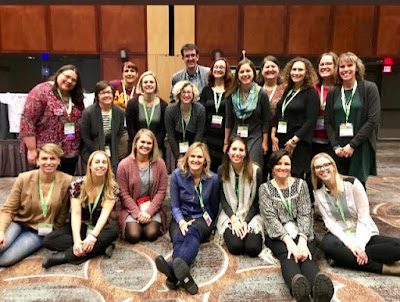Why I Let My High School Students Choose Their Own Books
After writing about the importance of a classroom library, I
began to think about my passion for students choosing their own books – my
unwavering belief that the foundation of my class must be student-selected
text. Kylene Beers told me during a
Twitter chat that 75% of what is read should be students’ choice; Kelly
Gallagher says 80% in his most recent book,
In the Best Interest of Students. On this issue, however, an expert answer isn’t
enough for me. This is an issue that I
live every day, and that I, as a teacher of high school readers, must answer
for myself.
Here, then, are my top reasons that independent reading is
at the center of my reading instruction:
1.
Independent
reading is the ultimate differentiation. It allows each student to read what they need
to read. They will be met just where
they are in terms of difficulty (which is far more complex than lexiles and
levels would lead us to believe), just where they are in terms of interest, and
just where they are emotionally. How
could one whole-class book ever meet those needs so specifically? Easy.
It could not.
2.
Independent reading strengthens the frontal
lobe, the judgment, decision-making center of the brain. Because this area of the teenage brain is under
construction, teens can be impulsive, thrill-seeking, and risk-taking. Allowing kids choice in books allows them to
exercise their “choosing muscles,” i.e. their
front lobe. And what a safe way
to practice choosing! Yes, please make a
bad decision in choosing a book – what a great, easily fixable learning
opportunity. And if my students’ frontal
lobes get strengthened via book selection, don’t I help them practice for real-world
decisions, like whether or not to text while driving, to drink at a party with
friends? Whether or not to go to
college? Every day teens must be given chances
to make choices that help them know themselves, what their values are, and what
they want to do with their lives.
Independent reading helps.
3.
Independent reading increases motivation. Another favorite line I often hear at school
is “these kids are just not motivated.”
I agree. These kids are not
motivated to do things they see no meaning in.
They are not motivated to get excited about things with no clear relevance. But put something in front of them that they
care deeply about? That is a different
story all together. When kids choose
their own books, no song and dance is required on my part, no catchy anticipatory
set or sleek, fun-filled activity. The
book is the motivation. My students read
because they like what they’ve chosen, and if they don’t, they can choose
again. Book choice motivates them to talk with partners, to share with groups,
to debate, to think, to write, and ultimately, to read even more.
4.
Independent reading creates hope. When you can read what you want, the message
is clear: “You CAN read.” And when you can read, you can grow, and you
can learn. What does this translate
into? You can set a goal and achieve
it. You can be different today than you
were yesterday. You can graduate. You can choose college and/or a career. Independent reading creates a stairway of
hope, on which my students are defining a future for themselves, all by the
simple act of allowing them choice.
5.
Independent reading shows I value individual
human beings. This is the most important
thing book choice does in my classroom.
It sends, over and over again, the message, “I value you” to every
student every day of the school year. It
tells them that I see each personality, each set of values and life
experiences. And I value them all. I see what is important in my students’ worlds,
and I don’t look down at them, I extend a hand.
When students feel valued, they release the need to fight for who they
are (or who they think they are). They
release the need to pour energy into not
doing. They can explore their identities
– Is this who I am? Is this what I want
out of life? What are my talents and how
do I want to use them? Independent
reading gives kids a place to find themselves.
Choice isn’t a token project; it’s the heart of our class.
I would love to be able to create a clean, upward-angling bar
graph of data to show all my students’ growth over our short year together. But real-life rarely goes like that. It’s bumpy with ups and downs, set-backs and
leaps ahead. Real growth takes
commitment, year after year. We can’t encourage kids to develop a love of
reading in elementary and middle school and then reveal the truth in high
school: all that was a cute little joke;
now we’re going to do real reading in
novels you may or may not connect with or understand.
Real reading is choice reading. It’s escaping into a romance over Spring
Break because I need that. It’s diving
deeply into Book Love or When Kids Can’t Read, What Teachers Can Do in August because I
need that. And, from time to time, it’s choosing to join a book group because I need that. If we want our kids to know real reading and
to become adults who read, then we must let our kids choose.




Comments
Post a Comment